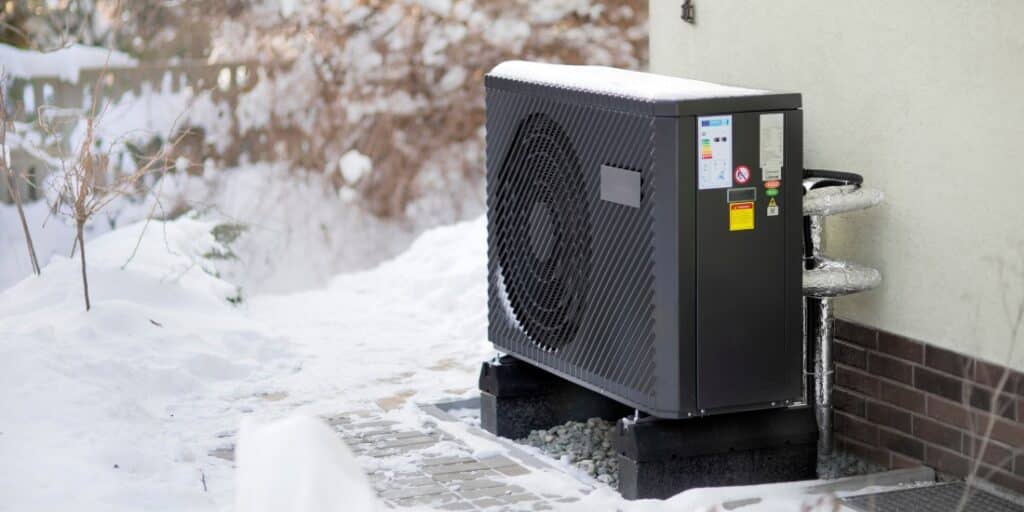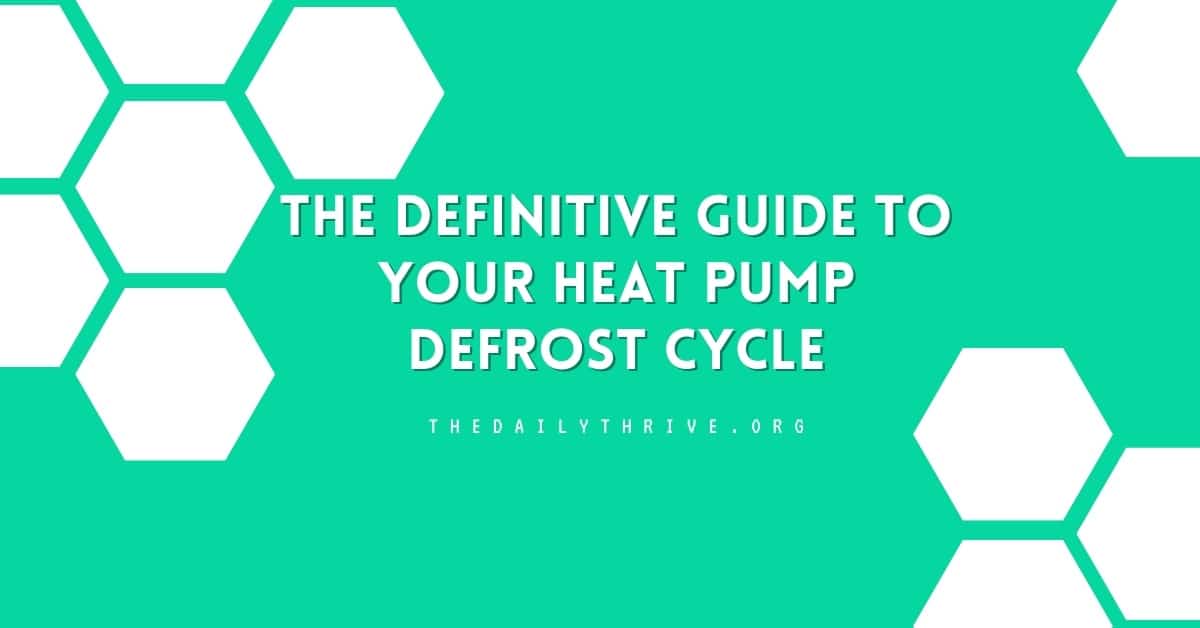Hello there, savvy homeowners and fellow comfort enthusiasts! I’m your seasoned HVAC technician with a toolbox of experience and knowledge on keeping your home climate-controlled. Today, I’m unpacking the secrets of your heat pump’s defrost cycle—essential reading for anyone looking to get savvy with their system.
When your heat pump hums along in heating mode during those crisp winter days, it’s doing a stellar job of scavenging warmth from the cool outdoor air. At this point, the outdoor coil is the show’s star, acting as an evaporator and wrangling heat from the outside to keep your living space snug. But, like any good drama, a potential villain lurks in the wings—frost.
Under the right (or rather, wrong) combo of temperature and humidity, frost can sneak up on the surface of the outdoor coil. This isn’t just a minor inconvenience. A frosty coil is like trying to breathe with a stuffy nose; it makes your heat pump strain and struggle, diminishing efficiency and driving up your energy bill. This is a battle where the heat pump can’t just “let it go.”
Enter the defrost cycle, your heat pump’s built-in hero, to banish frost from the coil kingdom. Think of it as your unit’s self-cleaning feature. Regular defrosting is par for the course in frost-prone conditions, and it’s a balancing act of timing: long enough to send the ice packing, yet short enough to keep the energy use lean and mean.
In the throes of the defrost cycle, your heat pump does a nifty reversal, momentarily switching to the cooling cycle. This isn’t a glitch in the matrix; it’s a calculated move that warms up the outdoor coil just enough to melt the frost away. Meanwhile, the outdoor fan is told to sit this dance out, allowing the coil’s temperature to rise swiftly and surely without any chilly breezes, making our defrost efforts for naught.
Why should you care about this defrost cycle? Because understanding and maintaining it is crucial to the health of your heat pump—and your wallet. Let’s pull back the curtain on how this cycle operates, why it’s important, and how you, as a vigilant homeowner, can ensure it’s performing at its frost-fighting best.
What is the Heat Pump Defrost Cycle?
So, what’s this defrost cycle?
Let’s dive into the nuts and bolts of the defrost cycle, shall we? Picture this: It’s a brisk morning, and everything outside is coated with a silvery frost—including, unfortunately, the coils of your heat pump. This isn’t just a winter wonderland postcard scene; it’s a real efficiency problem for your heating system.
Frost on the coils is like a winter coat that your heat pump didn’t ask for. It acts as an insulator, and while insulation might be great for your attic, it’s terrible for heat transfer—the bread and butter of your heat pump’s operation. When those coils are insulated by ice, heat transfer slows to a crawl. That means your heat pump has to push itself harder and longer to warm your home, munching more energy and hiking up your bills.
This is where the defrost cycle comes into play. It’s an automatic process built into your heat pump that periodically tells the system, “Hey, it’s time to shed that icy coat.” During the cycle, your heat pump briefly flips the script and enters a cooling mode. But instead of cooling your home, it’s using that process in reverse to warm up the outdoor coils.
Think of it as a brief tropical vacation for your coils—long enough to melt away the frost. This isn’t a constant back-and-forth; it’s a measured response to specific conditions. The system has sensors that detect when ice is present and when it’s time for a thaw-out session.
The beauty of the defrost cycle is its automatic nature. It’s a smart, automated feature that balances defrosting with the necessity of keeping energy use in check. It’s only triggered when needed, and it shuts off as soon as the coils are clear, ensuring your heat pump isn’t wasting energy heating the outdoors.

The Process of the Defrost Cycle
Here’s the step-by-step of the defrost cycle:
- The system senses ice build-up and kicks off the cycle.
- The outdoor fan takes a break, and the system switches to air conditioning mode momentarily (yes, even in the cold).
- This reverses the refrigerant flow, sending hot refrigerant to the outdoor coils.
- The ice melts away without any elbow grease from you.
- After the ice has cleared or a set amount of time has passed, the system returns to heating mode, and the fan returns to life.
So next time you see a thin sheet of ice forming on your heat pump in winter, remember: the heat pump defrost cycle, working behind the scenes to keep your home cozy without sending your energy bills through the roof.
How Often Will My Heat Pump Switch to the Defrost Cycle?
Understanding the rhythm of your heat pump’s defrost cycle can be like learning a new dance. There’s a tempo to it, influenced by several factors. When does your heat pump decide it’s time to tango with the defrost cycle? Let’s break it down.
First off, the thermostat isn’t the only sensor that’s calling the shots. The outdoor temperature and humidity levels play leading roles. Think of them as the music to which your heat pump dances. When the air outside is colder, and the humidity is just right, frost is more likely to form, prompting the system to initiate a defrost.
Then there’s the heat load—essentially, how much heat your home asks the pump to produce. On those bone-chilling days when you’re craving more warmth, your heat pump is pulling a double shift, which can lead to more frequent frost build-up on the coils.
The condition of your pump system is like the heat pump’s fitness level. A well-maintained system with clean filters and proper refrigerant levels is like a top-notch athlete—defrosts efficiently and only when necessary. Conversely, a neglected unit might struggle, triggering defrosts more often or for longer periods than needed, which can be like a cry for help (and a hint to call your friendly neighborhood HVAC technician).
So, how often is it normal for the defrost cycle to kick in? While there’s no one-size-fits-all answer, a general rule of thumb is that it shouldn’t happen more than every 35 minutes or so. If your unit is hitting the defrost button more frequently than that, it’s time for a professional check-up.
As for the duration, think of it as a coffee break for your system—a quick timeout to regroup. Typically, the defrost cycle lasts long enough to melt away the frost without turning into a leisurely break. This usually means no more than 10 minutes. Any longer, and you’re no longer in the realm of “efficient operation.”
Remember, the goal here is to be as energy-efficient as possible—defrosting enough to keep things running smoothly but not so much that you’re wasting energy. It’s all about balance, ensuring your heat pump can perform its frosty defrost dance and return to keeping you comfortable as swiftly and seamlessly as possible.
Why Is My Heat Pump Defrost Cycle Not Working?
Even the most dependable dance partners can stumble, and your heat pump is no exception. If you notice that your heat pump’s defrost cycle is on the fritz—either taking a permanent vacation or going into overdrive—there could be several culprits behind these performance hiccups.
Let’s explore some common issues that can disrupt the defrost cycle’s groove and what they might mean for your system.
- Faulty Sensors: These part will tell your heat pump when it’s time to switch to defrost mode. If they’re giving off false readings due to malfunctions or dirt build-up, your defrost cycle might not kick in when needed, or it could engage when there’s no frost in sight.
- Refrigerant Leaks: Your heat pump’s refrigerant is like the blood in its veins. If the levels are off due to a leak, the system can’t transfer heat effectively. This can cause the coils to freeze and the defrost cycle to run constantly or not long enough to clear the ice.
- Electrical Issues: From loose connections to faulty wiring, electrical problems can send mixed signals to your heat pump. This could prevent the defrost cycle from activating or cause erratic behavior.
- Improper Installation: If your heat pump wasn’t installed with the precision of a Swiss watch, you might see problems down the line. Incorrect placement or sizing can lead to frequent or inadequate defrost cycles.
- Damaged Coils: The coils are the battlefield where the frost fight occurs. If they’re damaged, your heat pump’s ability to defrost effectively is compromised.
- Outdoor Unit Getting Clogged: Leaves, dirt, and debris are like the annoying guests at a party—they can clog up your outdoor unit and prevent proper airflow. This not only affects overall performance but can also lead your system to misinterpret the need for a defrost cycle.
Some issues, like a clogged outdoor unit, might be resolved with DIY maintenance. However, when it comes to the more intricate systems like sensors, refrigerant levels, and electrical wiring, it’s time to call in the professionals.
Regular maintenance from a qualified technician can help prevent these heat pump problems and ensure that your defrost cycle runs only when it’s time to cha-cha, not all night long.
Summary
As we wrap up our deep dive into heat pump defrost cycles, it’s clear that this feature plays a critical role in the health and efficiency of your home’s heating system. When it’s working correctly, it’s a seamless process that you might not even notice—except for the consistent comfort of your home and the absence of sky-high energy bills.
However, when the defrost cycle hits a snag, it’s much like a misstep in a well-choreographed routine; it’s noticeable and can disrupt the comfort and rhythm of your home life. The key players in this delicate balance—the sensors, refrigerant levels, electrical connections, installation quality, coil condition, and outdoor unit cleanliness—each have a part to play.
For the most part, your heat pump is a self-sufficient marvel, capable of clearing its throat of frost without much ado. But it does require a watchful eye and regular check-ups to ensure it remains in tip-top condition. Simple preventative measures like clearing debris from the outdoor unit can be easily managed independently. Yet, for the more intricate workings, such as dealing with refrigerant levels or sensor issues, a professional technician’s touch is the way to go.
Remember, the defrost cycle is not just a feature; it’s your comfort guardian, quietly working against the icy grip of winter to keep your home warm and your energy costs down. So, give it the attention it deserves, and it will keep dancing smoothly through even the coldest seasons.
Now, equipped with this knowledge, you’re set to keep your heat pump performing flawlessly. If you ever have a question or if your heat pump seems to be stuck in a defrosting loop, don’t hesitate to reach out to a professional. After all, ensuring the heat pump defrost cycle is functioning properly is not just about fixing a mechanical issue—it’s about securing the cozy sanctuary of your home.






